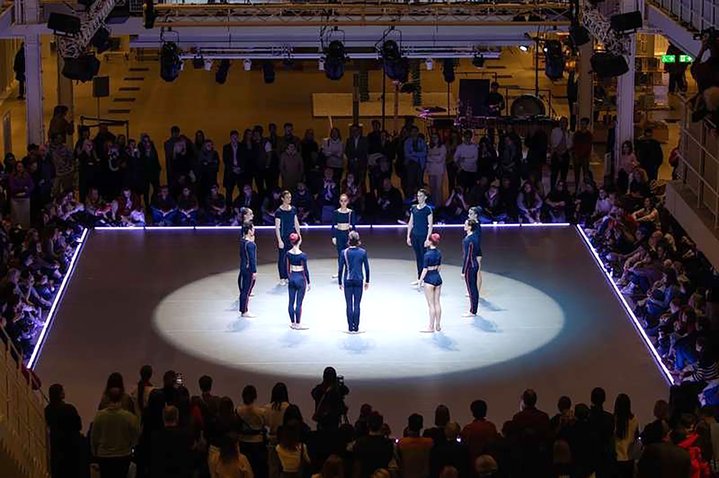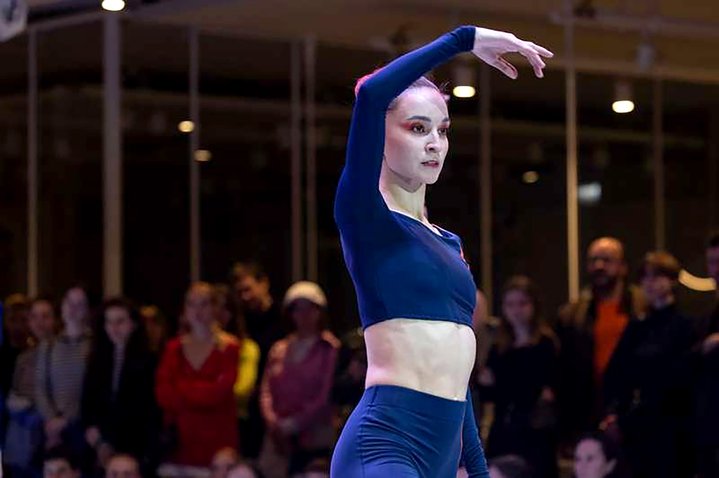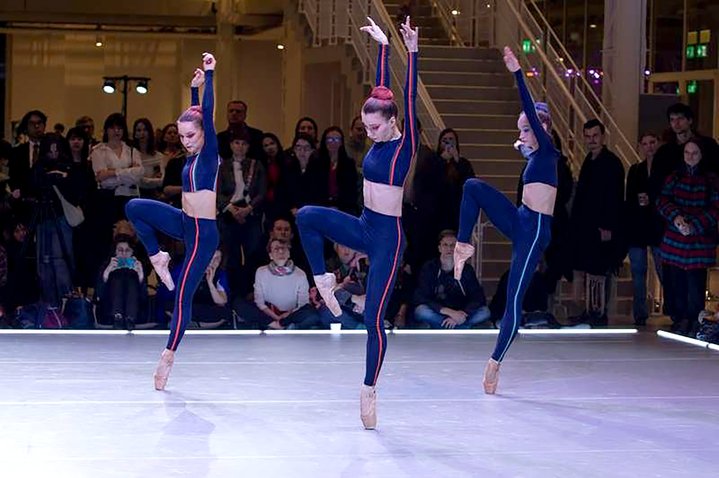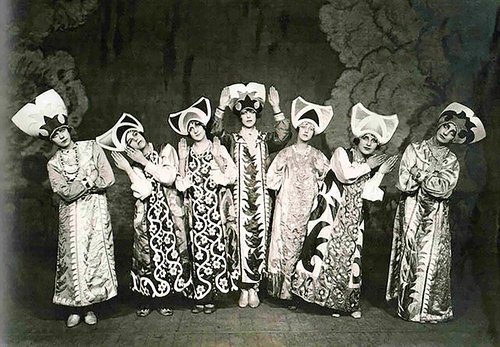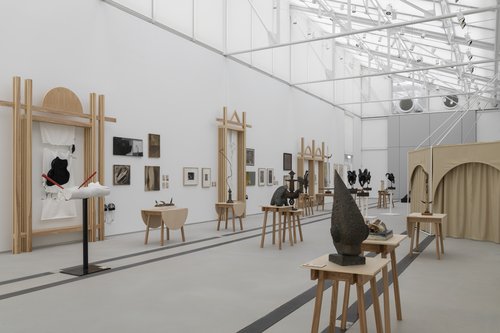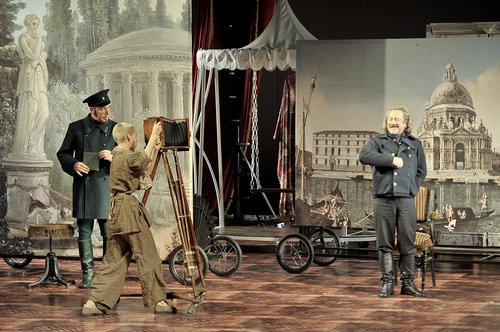Premiere of Graphite at GES-2

‘Graphite’ Ballet. Evening show. Moscow, 2024. Photo by Gosha Bergal. Courtesy of Courtesy of GES-2 House of Culture
Since its inception, GES-2 has been known for its multidisciplinary interests. Now for the first time, classical ballet has become its focal point, as this citadel of contemporary art turns its attention to the flagship of Russian choreography, the Ural Opera Ballet company and millennial composer Vladimir Gorlinsky.
For at least half a century, dance in a traditional museum setting has become if not a common practice, at least familiar to contemporary audiences. Looking back, George Balanchine looked for a new audience among sculptures and paintings and today dance is flourishing in the museum space. Olga Tsvetkova staged her own ‘Sacred Spring’ at the New Manege in Moscow. The annual ‘Context. Diana Vishneva’ festival invited Russian choreographer Pavel Glukhov and Spanish ballet phenomenon Marcos Morau to perform in the halls of the Pushkin Museum of Arts.
However, in Russia it was the Ural Opera Ballet that busted the discipline’s isolation behind the curtains in a theatre. Fifteen years ago, as a provincial institution (what was at the time called the Ekaterinburg Opera and Ballet Theatre) it had been chugging along at the tail-end of the era of practices which had been established by Bolshevik Commissar for Education Anatoly Lunacharsky. A key year in its evolution, in 2011 Vyacheslav Samodurov (b. 1974), a recently retired international ballet star, was invited to take the lead of the institution. With an international career and cosmopolitan outlook, this graduate of the Vaganova Academy, Samodurov had won accolades as a member of the Marinsky Theatre, the Dutch National Ballet and the Royal Ballet in London.
Once he had arrived in Ekaterinburg, Samodurov became involved with the Ural Industrial Biennale of Contemporary Art and the prima ballerinas found themselves quickly replaced by a youth troupe in a huge industrial hanger in the Uraltransmash plant dancing a performance that featured neither Tchaikovsky nor stories about fairies and swans. To a cool mix of classical and electronic music by DJ Vitaly Zherebtsov, the dancers appeared to be lit up in neon. In the finale, the stage and dancers were all sprayed with water in a performance called ‘H₂O’. Between the dress rehearsal and the premiere, the artists dried themselves using heat guns in front of the audience, it captured international attention, even being shown on BBC News.
It marked the beginning of a new stage in the institution’s history with the premieres in Russia of cutting-edge productions by Hans van Manen, Sol Leon and Paul Lightfoot, all pillars of contemporary choreography. The ballet ‘Vain Precaution’ inhabited the space of paintings by Van Gogh. Then followed a whole series of world premieres commissioned by Yuri Krasavin, Anatoly Korolev, Alexei Sysoyev, all leading contemporary Russian composers. Quality performances, they were more importantly paving the way for a new art form.
In the twelve years that Samodurov directed the Ural Ballet he transformed it from a semi-professional company into a light-footed, forward-looking troupe that adapts to challenges with a steely drive. There is something of the city’s spirit itself in their ethos, fast changing, its face evolving yet keeping something of its industrial past.
The theatre is now called the Ural Opera Ballet and each of its premieres draw dance enthusiasts from Moscow and it receives invitations to all major dance festivals. There are collaborations with the cultural institutions - two years ago the Ural Ballet was invited to dance in the Tretyakov Gallery as part of the parallel programme around the exhibition ‘Diaghilev. General Rehearsal’. Staged by Maxim Petrov, originally from St Petersburg, the company performed ‘The Afternoon of a Faun’, a contemporary interpretation of Vaclav Nijinsky historical choreography for Diaghilev's Russian Seasons.
GES-2 and Ural Ballet are a good insitutional fit for one another. ‘Graphite’, which runs for 35 minutes, is a collaboration between millennial composer Vladimir Gorlinsky (b. 1984), for whom this is his first foray into ballet, and choreographer Anton Pimonov (b. 1980), who has much experience working in Ekaterinburg. The dance is set in Prospekt, the vast central gallery space in GES-2 arranged to allow the audience to sit close to the dancers. Yet the performance looks even more spectacular from up in the balconies.
The musicians of the Moscow Ensemble of Contemporary Music (MAC) were also split into groups and scattered around, with some just behind the audience, and others in the balconies, surrounded by listeners and spectators. This spatial solution means that the choreography can be seen not only in profile, as in the theatre, but from all four sides. It can be challenging for both the choreographer and the performers who are on view at all times.
There are no decorative sets in this production, only costumes comprising monochrome tights, tops and shorts, designed by Elena Trubetskova. ‘Graphite’ itself has no plot bringing to mind George Balanchine’s words “When there is a man and a woman on stage, it is already a plot”. The five female and five male dancers enter the space as an ensemble, quickly breaking up into pairs, the duets being the most interesting part of the production. They present graphite either as shining with sharp edges or softly undulating, yet still not fluid. Dramatic power and emotional swings come through the music: elastic, rhythmic and theatrical.
After three sell out performances in Moscow ‘Graphite’ will move to Ekaterinburg, where it is to become part of the Ural Ballet’s permanent repertoire. Last year thirty-year-old Maxim Petrov (b. 1994) took over the management of the company. It is a daunting task, filling the shoes of Samodurov and charting the evolution of this new kind of contemporary art.






